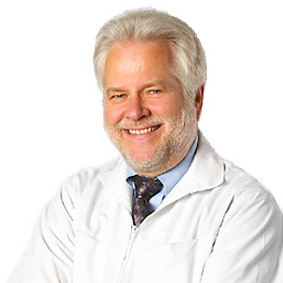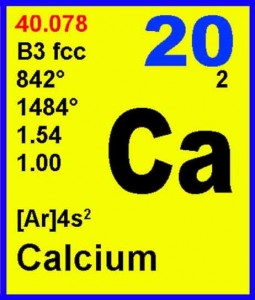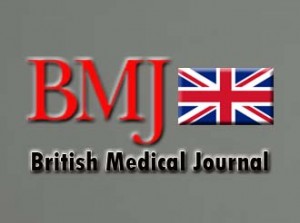



MYTH: High cholesterol is the cause of heart disease.
FACT: Cholesterol is a fairly insignificant player in heart disease.
MYTH: High cholesterol is a good predictor of heart attacks.
FACT: High cholesterol is a lousy predictor of heart attacks. Half the people admitted to hospitals with heart disease have normal cholesterol, and plenty of people with elevated cholesterol have perfectly healthy hearts.
MYTH: Lowering cholesterol with statin drugs will prolong your life.
FACT: There is no data showing statins have any impact on longevity.
MYTH: Statin drugs are perfectly safe.
FACT: Statin drugs have significant side effects, including loss of memory and libido, muscle pain and fatigue, and approximately 65 percent of doctors don't report those side effects, according to a 2007 study.
MYTH: Statin drugs are appropriate for men, women, children and the elderly.
FACT: The only group in which statins have been shown to have even a modest effect is in middle-aged men who've already had a heart attack. If you're not in that group, you've got no business on a statin drug.
MYTH: Saturated fat is dangerous.
FACT: Saturated fat is mostly neutral and may even have some health benefits. A recent peer-reviewed study has shown no association between saturated fat and heart disease.
MYTH: The higher your cholesterol, the shorter your lifespan.
FACT: In the Framingham Study, the people who actually lived the longest had the highest cholesterol.
George Mann M D., Associate Professor of Bio-Chemistry at Vanderbilt University College of Medicine and a participating researcher in the Framingham Heart Study was one of the doubters of the benefit of the low cholesterol. The diet-heart idea is the “greatest scam” in the history of medicine, he said. “Researchers have held repeated press conferences bragging about cataclysmic breakthroughs which the study directors ‘claim shows that lowering cholesterol lowers the frequency of coronary disease. They have manipulated the data to reach the wrong conclusions”.Dr. Mann also declared that NIH managers“used Madison Avenue hype to sell this failed trial in the same way that the media people would sell an underarm deodorant”.
In 1992, forty-four years after the Framingham Study began, study director William Castelli, M.D.wrote in an editorial to the Archives of Internal Medicine. “In the Framingham Study, the more saturated fat one ate, the more cholesterol one ate, the more calories one ate, the lower the person’s serum cholesterol...we found that people who ate the most cholesterol, ate the most saturated fat, ate the most calories, weighed the least, and were the most physically active”.
Dr. John Yudkin, M.D., pointed out that there was a better and truer relationship between sugar consumption and heart disease. “There is a sizeable minority -of which I am one-that believes coronary disease is not largely due to fat in the die t”. Three decades later, Dr. George Mann arrived at the same conclusion and assembled a distinguished group of scientists and doctors to study the evidence that fat and cholesterol cause heart disease, a concept he later called “the greatest health scam of the century”. Sugar is a far greater danger to your heart than fat ever was or will be. Most medical experts have tried and convicted the wrong culprit. Fat was innocent all the time. It’s sugar that’s the true culprit of heart disease, diabetes, obesity, and many cancers.
Courtesy of:
John H. Keefe III, D.C.
(918) 663-1111


IN THE NEWS: LOW-LEVEL PESTICIDE EXPOSURE LINKED TO PARKINSON'S DISEASE The risk of Parkinson’s disease clearly increases with exposure to certain environmental toxins, such as pesticides. Pesticides, herbicides, and fungicides are potent toxicants that may cause disruptions or damage to the neurological system, including your brain. What is perhaps most concerning is that even ambient exposure to pesticides has been found to increase the risk of Parkinson’s disease considerably,and this was further confirmed by new research linking the disease to extremely low-level pesticide exposure.
CHIROPRACTIC: THE CHIROPRACTIC APPROACH TO PAIN. As Americans we have grown up in a drug culture. Some people don't think twice about putting artificial pharmaceuticals in their mouth because they have this assumption that it must be safe. But when it comes to pain medication this is a dangerous assumption to make. There are certain pain situations that medication might be necessary, temporarily. But the chiropractic/natural healthcare approach to pain is to understand its root cause. Pain can be your friend. It might be the only way you know something is wrong in your body so turning pain off with some dangerous medication makes as much sense as clip in the wire to the oil light when it comes in your car. The oil light is not your enemy; the condition that caused the oil light to come on is what needs to be fixed. When it comes to pain there can be structural causes (subluxation), internal organ or visceral causes, chemical or toxicity causes or emotional/neurotransmitter (brain chemistry) causes. As a chiropractic physician we will search for the root cause and through chiropractic realignment, diet and detoxification, acupuncture and physical therapy, we will correct the cause and the pain will take care of itself. If you or a family member suffers from some pain disorder seek a solution and not a cover-up. More than 2000 people a week die from medications and a high percent of those are from pain medication. Visit our web sites: keefeclinic.com & facebook.com/keefeclinic
Do you have low T? (Low testosterone.) Here are some of the symptoms of low T: Hypogonadism is a condition in which a man has low T and may experience symptoms, including:
This is the next great frontier for pharmaceutical companies to try to make a bundle of money. Unfortunately for you it might come at quite a cost TO YOU. Lower down in this article you can read some of the side effects from taking testosterone from a pharmaceutical company. For instance here's just a couple: For Men Under 65: possible 300% increased risk of heart attacks, stroke and death. For Men Over 65: possible 200% increase in cardiac event risk
I have found for my patients’ natural formulas, foods and herbal products can resolve symptoms of low T without any risky side effects. Just because you see something promoted 100 times a day doesn't mean that it's safe OR the best way for you to manage a given condition. We have been programmed to feel like we need whatever we see promoted over and over again. That's why advertising in such big business.
So before you expose yourself to unnecessary risk consider a natural approach, there is an excellent Herb that I've used over 30 years for different things but it seems to work great for a lot of men with low T. This herb is called blessed thistle. You can pick it up at my office or virtually any health food store in town, between 4 to 6 Caps does a great job for most men. Your low T could be more complicated than that and we can evaluate you for better targeting of the nutrients you need for this condition. Feel free to call 918-663-1111 for an evaluation.
SIDE EFFECTS FROM TESTOSTERONE THERAPY
AndroGel (testosterone gel) is used to treat conditions in men that result from a lack of natural testosterone, a naturally occurring male hormone. Common side effects include nausea, vomiting, headache, dizziness, hair loss, trouble sleeping, change in sexual desire, redness/swelling of the skin, change in skin color, or acne.
Some side effects of testosterone may occur that usually do not need medical attention. Check with your health care professional if any of the following side effects continue or are bothersome or if you have any questions about them:
More Common
Less common
Courtesy of:
John H. Keefe III, D.C.
(918) 663-1111

WELLNESS/PREVENTION: GLASSESOFF FOR YOUR IPHONE GlassesOff scientists have developed a proprietary method for improving near vision sharpness, by improving the image processing function in the visual cortex of the brain. GlassesOff is a personalized product that monitors user performance and progress. The product constantly adjusts according to each user’s ongoing progress. The GlassesOff application is comprised of two components: Game-like challenges: Intensive visual stimulation tasks, composed of reading abilities evaluations and approximately three 12-minute sessions per week, over a period of three months. Ongoing care (as needed): To help maintain the achievements over time in spite of the natural effects of aging, users are prompted to use the product once every few weeks according to their current reading abilities. IT’S FREE
|
||
Visit our web site: keefeclinic.com&facebook/keefeclinic
As we discuss inflammatory and anti-inflammatory foods we must understand the difference in body types. There were four body types that require slightly different blends of carbohydrates fat, and proteins. These can be divided into two basic groups one the high complex carbohydrate low-fat and the other being high-protein low carbohydrate. If you’re in a high complex carbohydrate low-fat group then foods like eggs, butter, salt, redmeat and some spices could be a problem. If you’re in the high protein low carb group than refined carbohydrates sugars grains could be a problem. So it’s important to know what body type you have as you review the following list of anti-inflammatory foods. Also any food that you’re allergic to can be pro-inflammatory even on the list of anti-inflammatory foods. For instance the nightshade family can be pro-inflammatory if you’re allergic to them. They include: potatoes (Solanum tuberosum), tomatoes (Lycopersicon esculentum), many species of sweet and hot peppers (all species of Capsicum, including Capsicum annum), and eggplant (Solanum melongena). Less well know, but equally genuine nightshade foods include ground cherries (all species of Physalis), tomatillos (Physallis ixocapra), garden huckleberry (Solanum melanocerasum), tamarillos (Cyphomandra betacea), pepinos (Solanum muricatum), and naranjillas (Solanum quitoense). Pimentos (also called pimientos) belong to the nightshade family, and usually come from the pepper plant Capsicum annum. Pimento cheese and pimento-stuffed olives are therefore examples of foods that should be classified as containing nightshade components. Although the sweet potato, whose scientific name is Ipomoea batatas, belongs to the same plant order as the nightshades (Polemoniales), it does not belong to the Solanaceae family found in this order, but to a different plant family called Convolvulaceae.
So as you read the list of anti-inflammatory foods keep in mind that your body type might preclude some of these foods as well as your food allergies.
Inflammation is one of the body's defense mechanisms. Inflammation results in increased blood flow in response to infection and certain chronic conditions. Symptoms of inflammation include redness, swelling, pain, and heat.
But when inflammation becomes uncontrolled then it becomes the soil for chronic disease. Besides foods, stress, obesity, toxicity and an acidic chemistry help produce uncontrolled inflammation in the body.
Diseases that arise from inflammatory chemistry can be the following: Autoimmune disorders, Obesity, allergies, Alzheimer's, anemia, ankylosing spondylitis, asthma, autism, arthritis, carpal tunnel syndrome, celiac, Crohn's disease, congestive heart failure, Chronic Fatigue Syndrome, eczema, fibromyalgia, fibrosis, gallbladder disease, Gerd, Guillain-Barré , Hashimoto's thyroiditis, heart attack, kidney failure, lupus, multiple sclerosis, neuropathy, pancreatitis, psoriasis, polymyalgia rheumatica, rheumatoid arthritis, scleroderma, stroke, surgical complications, many other pain disorders.
Specifics vary from diet to diet, but in general anti-inflammatory diets suggest:
Courtesy of:
John H. Keefe III, D.C.
(918) 663-1111
IN THE NEWS: BUYER BEWARE Most people assume that scientific integrity is somehow assured; that there are safeguards along the way, preventing fraudulent research from harming patients. Unfortunately, scientific misconduct has become a very serious and widespread problem that threatens the entire paradigm of science-based medicine—unless changes are made. Again and again, papers assessing the prevalence of scientific fraud and/or the impact this is having shows that the situation is dire and getting worse. “Last summer, British researchers provoked concern when they published a paper raising the possibility that by following an established guideline UK doctors may have caused as many as 10,000 deaths each year,2" Larry Husten, editorial director of WebMD professional news, writes. “Now, they have gone a step further and published an estimate that the same guideline may have led to the deaths of as many as 800,000 people in Europe over the last five years...
WELLNESS: "DON'T COUNT ON MILK TO BEAT OSTEOPOROSIS. In a Harvard study of 78,000 nurses, drinking three or more glasses of milk per day did not reduce fractures at all. An Australian study showed the same thing. In the Harvard study, women consuming greater amounts of calcium from dairy foods had significantly INCREASED risks of hip fractures, while no increase in fracture risk was observed for the same levels of calcium from non-dairy sources. “Consumption of dairy products, particularly at age 20 years, was associated with an increased risk of hip fracture in old age. (“Case-Control Study of Risk Factors for Hip Fractures in the Elderly”. American Journal of Epidemiology. Vol. 139, No. 5, 1994).
CHIROPRACTIC: CHIROPRACTIC CARE is not just for those patients who have been involved in an accident or suffer from chronic neck or back pain. Chiropractic care can benefit many people with a great number of health conditions. Even those with few, if any, health conditions can benefit from chiropractic maintenance care. How, you ask? Life's daily stressors add up impacting the human body in far greater ways than you might realize. As a natural healthcare approach, regular chiropractic adjustments can restore and maintain balance within your body, leaving you better prepared to live life to its fullest. In fact, ongoing chiropractic maintenance care may offer significant health benefits, including but not limited to, Management/Relief of: Back and Neck Conditions, Leg Pain (Sciatica), Knee, Foot and Ankle Pain, Shoulder or Elbow Pain, Arm or Wrist Pain, Carpal Tunnel Syndrome, Migraine and Tension Headaches, High blood pressure, Sleep disorders, Repetitive Stress Disorders, Stress and Tension Disorders, Fibromyalgia, Bursitis, Arthritis, Chronic Injuries, Improve Nervous System Function, Relieve Prenatal Discomfort, Increase Vitality and Improve Quality of Life, Provide Preventative Care, Improve Overall Health and Wellness for both children and adults.
Visit our web site: keefeclinic.com or facebook/keefeclinic.com
A man walks up to the reception desk in a doctor's office.
The receptionist ask him what he had.
He said shingles.
She took down his name, address, medical insurance number and told him to have a seat.
15 minutes later, a nurse's aide came out and asked him what he had.
Shingles he replied.
She took down his height, weight, complete medical history and told him to wait in the examining room.
A half-hour later, a nurse came in and asked him what he had.
Shingles he replied again.
She took blood samples, a pressure test, a specimen told him to take off his clothes and wait for the doctor.
An hour later, Dr. Keenan asked what he had.
He said shingles.
The doctor said where?
He said outside in the truck. Where do you want THEM?
In November we covered a new study looking at the use of probiotics in treating depression. Today I ran across another article which shows significant benefits for IBS patients as well. This newest study is a randomized, double blind, placebo-controlled trial which looked at the use of a multispecies probiotic supplement in patients with irritable bowel symptoms. A total of 49 patients were divided into two treatment groups. (25 received probiotics and 24 received only a placebo). Patients were surveyed on their symptoms and in addition, fecal microflora were analyzed in 34 patients (17 from each group) to determine if changes in intestinal flora were actually taking place following supplementation.
The authors conclude that "Multispecies probiotics are effective in IBS patients and induce the alterations in the composition of intestinal microbiota." At the end of 4 weeks, 68% of the treatment group was reporting substantial relief in terms of pain/discomfort, bloating, stool frequency/consistency... nearly twice the percentage of the placebo group.
"Don't count on milk to beat osteoporosis.
In a Harvard study of 78,000 nurses, drinking three or more glasses of milk per day did not reduce fractures at all. An Australian study showed the same thing.
Nearly 78,000 nurses participated in the 12-year milk and bone fracture study. MILK, DIETARY CALCIUM AND BONE FRACTURES The study found "no significant association" between teenage milk consumption and the risk of adult fractures. Data from the study indicate that frequent milk consumption and higher dietary calcium intakes in middle aged women do not provide protection against hip or forearm fractures. A SHOCKING AND UNEXPECTED REVELATION
 In the Harvard study, women consuming greater amounts of calcium from dairy foods had significantly INCREASED risks of hip fractures, while no increase in fracture risk was observed for the same levels of calcium from non-dairy sources.
In the Harvard study, women consuming greater amounts of calcium from dairy foods had significantly INCREASED risks of hip fractures, while no increase in fracture risk was observed for the same levels of calcium from non-dairy sources.
“Consumption of dairy products, particularly at age 20 years, was associated with an increased risk of hip fracture in old age. (“Case-Control Study of Risk Factors for Hip Fractures in the Elderly”. American Journal of Epidemiology. Vol. 139, No. 5, 1994).
And the 12 year long Harvard Nurses’ Health Study found that those who consumed the most calcium from dairy foods broke more bones than those who rarely drank milk. This is a broad study based on 77,761 women aged 34 through 59 years of age.
“These data do not support the hypothesis that higher consumption of milk or other food sources of calcium by adult women protects against hip or forearm fractures.” (Source: Feskanich D, Willett WC, Stampfer MJ, Colditz GA. Milk, dietary calcium, and bone fractures in women: a 12-year prospective study. American Journal of Public Health. 1997).
 Amy Lanou Ph.D., nutrition director for the Physicians Committee for Responsible Medicine in Washington, D.C., who states that: “The countries with the highest rates of osteoporosis are the ones where people drink the most milk and have the most calcium in their diets. The connection between calcium consumption and bone health is actually very weak, and the connection between dairy consumption and bone health is almost nonexistent.”
Amy Lanou Ph.D., nutrition director for the Physicians Committee for Responsible Medicine in Washington, D.C., who states that: “The countries with the highest rates of osteoporosis are the ones where people drink the most milk and have the most calcium in their diets. The connection between calcium consumption and bone health is actually very weak, and the connection between dairy consumption and bone health is almost nonexistent.”
The best milk substitutes
A favorite milk substitute is unsweetened almond milk, not only because it is alkalizing (as almonds are), but also because it’s delicious and tastes very similar to milk. You can even cook with it!
If almond milk is hard to get, you can also try rice or soy milk
THERE is not a shred of evidence that upping calcium intake above a relatively low threshold, improves bone health or reduces the risk of bone fractures.
 A study just published in the prestigious British Medical Journal hammers another nail into the coffin of the eat-more-calcium-for-stronger-bones myth, with the finding that women with the highest intake of calcium had a 19% higher risk of experiencing a hip fracture than those whose calcium intake was modest but adequate.
A study just published in the prestigious British Medical Journal hammers another nail into the coffin of the eat-more-calcium-for-stronger-bones myth, with the finding that women with the highest intake of calcium had a 19% higher risk of experiencing a hip fracture than those whose calcium intake was modest but adequate.
This study's strengths included: the large number of study subjects (over 60 000 Swedish women); the duration of follow-up (19 years); the fact that it was prospective (i.e. the participants were recruited before any of them had suffered a fracture) and calcium intake was repeatedly measured over the follow-up period, eliminating the problem of 'recall bias' -the tendency of people who have already suffered a disease, to overestimate their past exposure to risk factors for it - that plagues retrospective studies; and the statistical adjustment for various other factors that affect bone health and fracture risk, such as smoking, physical activity level, and whether the women had had children (which decreases fracture risk).
 The researchers analyzed the participants' diet records, and divided them into 5 groups, from lowest to highest calcium intake. They found that women with the lowest calcium intake from foods and supplements (less than 750 mg per day) had an 18% higher risk of suffering any type of fracture, and a 29% greater risk of hip fracture, than women who consumed 882-996 mg of calcium per day (an amount easily achieved on an entirely plant-based diet, high in green leafy vegetables, legumes, nuts and seeds).
The researchers analyzed the participants' diet records, and divided them into 5 groups, from lowest to highest calcium intake. They found that women with the lowest calcium intake from foods and supplements (less than 750 mg per day) had an 18% higher risk of suffering any type of fracture, and a 29% greater risk of hip fracture, than women who consumed 882-996 mg of calcium per day (an amount easily achieved on an entirely plant-based diet, high in green leafy vegetables, legumes, nuts and seeds).
However, women with the highest calcium intake (more than 1137 mg per day) had a 19% higher risk of suffering a hip fracture than those in the 882-996 mg/day group. Given that the Australian government now recommends a daily intake of 1300 mg of calcium for individuals over 50, and many older women are taking more than 1000 mg per day of calcium from supplements, above and beyond what they obtain through their diet, the findings from this carefully-conducted study must give serious pause for thought.
According to Carolyn Dean, a medical and naturopathic doctor:
"I've heard statistics like a 700 percent rise in osteoporosis in a 10-year period, even while taking all this calcium. The myth that's been created about calcium is that we need twice as much calcium as we do magnesium. Most of the supplements reflect this. We've got a situation where people are taking 1,200 to 1,500 milligrams of calcium and maybe a few hundred milligrams of magnesium.
The 2:1 ratio—that was a mistake; a mistaken translation from French researcher Jean Durlach, who said never ever go beyond two parts calcium to one part magnesium in your food, water, or supplement intake combined."
Twelve green leafy vegetables were analyzed for their mineral contents. The following concentration ranges (in mg g−1 dry weight) were obtained for the elements determined: sodium, 0·11–0·76; potassium, 0·36–1·07; calcium, 0·24–0·73; phosphorus, 0·18–0·39; magnesium, 0·66–1·76; manganese, 0·03–0·12; iron, 0·35–0·56; zinc, 0·04–0·12. NOTE: 2-3x THE MAGNESIUM TO CALCIUM
Navigating through lies, politics and profit in an attempt to find better health.
Big food and big Pharma have lied to you to increase their bottom line. In the attempt to understand health and the principles that lead to better health you have to navigate through conflicting messages that attempt to brainwash you into lining the pockets of big food and big Pharma to the deficit of you and your family's health.
To give an example of this we will talk about heart disease and osteoporosis.
If I ask most people on the street what was the main contributor to heart disease then cholesterol would be the first thing out of most people's mouth. If I ask you the number one way of maintaining healthy bones most people would say consuming more calcium. My question to you is: did you arrive at these conclusions by your own in-depth study of the research and science or have you opened up a medical textbook to determine how these conditions develop and exactly what these conditions are? Was it by extensive research that you come to these conclusions? Of course not you have been taught by television, radio and newsprint and even doctors.
Let me give you some facts: one of the largest studies, I'm talking real-life studies not theoretical studies, was a Harvard study of 78,000 nurses. The facts are the nurses that consume the most calcium had the most bone fractures. Asian women living in their own culture eating their own cultural diet get one third the calcium that American women get and osteoporosis is extremely rare in their society. When they move to the US and incorporate the US diet they become the top risk group for osteoporosis.
The next fact is the cholesterol theory of heart disease first gained its acceptance in the 1950s. Medical nutritionist Dr. Keyes supposedly correlated the level of fat intake with heart disease in six countries and even though his theory was rejected at the time he used political maneuvering by becoming part of the Heart Association and finally got his theory accepted. When you look at his original research you will see a study of 23 countries trying to make this correlation and he had to eliminate 16 of these countries in order to make his theory look correct statistically. When you add back the 16 countries he conveniently eliminated the correlation just doesn't stand up. And between the 1950s and about 1976 there are six different major studies trying to correlate fat in the diet with heart disease and they have all failed. In fact every major study from 1969 through the present has failed to support the cholesterol theory.
One of the longest continual studies is ongoing today started in 1948 in Framingham Massachusetts. This study involves 5000 residents and has shown some amazing contradictions to the cholesterol theory of heart disease. In fact this study has shown after the age 47 the patients with the highest cholesterol outlive the patients with lower cholesterol levels. This study also shows those who ate more saturated fat weighed less and had more energy than those on the low-fat diet.
In April 1996 the second International symposium on dietary fats and oils consumption in health and disease was hosted by the Southwest University medical school in Dallas Texas. Researchers from around the world presented their findings on the effects of fat in the human diet. After the presentations showing the subjects following the low-fat diet hadn't got rid of their obesity, and not lowered their cholesterol levels, had lowered their HDL levels (the good cholesterol), and had increase their blood levels of triglycerides (a major risk factor for heart disease), the moderators of the symposium pronounce the low-fat diet a failure.
The strongest evidence points to inflammation as the soil in which obesity, diabetes, and heart disease develop from. So strategies to reduce inflammation will lead to the best chance of better health. This is where diet and lifestyle are very important. There are several factors that lead to inflammation in the body which include: junk food (highly refined carbohydrates), hydrogenated oils that include trans fats, elevation in bad prostaglandins and hormones like insulin which are produced by the overabundance of refined vegetable oils and refined carbohydrates and sugar, and the reduced amount of helpful antioxidants and pH balancing foods and beverages that reduce the excess acidity of the body.
So as we look to diet and lifestyle (because even too much aerobic exercise without appropriate amounts of antioxidants in the diet can also lead to inflammation) then selecting the proper diet is crucial. Unfortunately there is no one diet that fits everybody and so you need to match the right ratio of fats, carbohydrates and proteins that fit your genetic makeup.
The body typing system that I use consists of four different body types: thyroid, gonadal, adrenal and pituitary. These four types tend to correspond the four personality types: Sanguine (This type is characterized by spontaneity, optimism, enthusiasm, high energy, mental flexibility, novelty seeking, impulsiveness and curiosity)., Phlegmatic (These people are mainly defined by their social skills, such as their ability to express themselves and read other people face expressions and body language. They do well at connecting facts and seeing “the big picture”. They are nurturing, sympathetic, agreeable and emotionally expressive). Choleric (This type is associated with testosterone, which is also present in men and women, but more so in men. These people are direct, focused, tough, analytical, logical and strategic. They have a great deal of courage and like to compete, often against each other. They often have square jaws, high cheekbones and high foreheads and love to use words like “intellect”, “ambition” and “challenge”) and Melancholic (tend to be calm, loyal and orderly, just as their personality name sounds. They are cautious and conventional. These men and women inherited genes in the serotonin system and their favorite words are “family”, “loyal”, “respect”, “caring”, “values” and “moral”). Most people are unique blend of four different types of personality, where all of the traits are present to some extent.
These four body types can be divided into two groups. We can call one group the protein group (about 70% of US) and the other the complex carbohydrate group (30%) the protein group tends to be sensitive to carbohydrates particularly refined sugars and grains. The carbohydrate group tends to be sensitive to fats (eggs, butter and red meat), salt and spices. So a diet too high in sugars and grain can lead to inflammation in the protein type. A diet high in fats and oils can lead to inflammation in the carbohydrate type.
So simply learning which body type you are and focusing on the correct ratio of fats, carbohydrates and proteins you can make a significant difference in your health.
There are five laws of health that we encourage our patients to follow to regain and maintain good health over a lifetime. These laws are diet, exercise, rest and relaxation, positive spiritual and mental attitude and a healthy balanced nervous system.
In the area diet this includes eating your body type diet but also consuming enough water for your body weight. In order to determine how much water you need to drink you divide your weight in half and consider that answer in ounces. For instance a hundred pound person their cleansing dose of fluids would be 50 ounces 80% of that would give you the minimum fluids they should drink which is 40 ounces. Dehydration can cause a whole host of conditions and cause any condition your suffering with to be a little worse. Since the EPA recommends boiling city water before drinking we encourage our patients to drink filtered water. Also when it comes to water you can get water in different pH ranges. If you're dealing with an inflammatory chemistry your body is going to be acidic. And so alkaline water can be very effective in the overall management of your body chemistry.
As we consider water we also consider detoxification because we live in a toxic environment. And so most patients need to undergo some level of detoxification in order to remove important stressors in their ability to maintain normal function and better health. So drinking your cleansing dose of fluids can be helpful in detoxification. And when it comes to how much alkaline water we recommend you should drink about a liter a day. Too much alkaline water can produce negative effects for some people.
When it comes to exercise there are exercises that work best with different body types.
Rest and relaxation would also include quality sleep. New research indicates that sleep is one way that our brains are able to detoxify. But there's a growing list of health problems that are associated with the lack of proper sleep. The average adults should get between seven and nine hours of sleep each night.
When it comes to positive mental and spiritual attitude than spiritual disciplines like meditation, prayer and helping others can be very important. When it comes to moods neurotransmitters can be important. Serotonin is considered an important neurotransmitter when it comes to depression or anxiety. What most people don't realize is your gut is your second brain and 80 percentage of serotonin is produced in your gut. Now the serotonin in your brain and the serotonin in your gut don't appear to intermingle. But when the level is out of balance in one area it will affect the other. Probiotics are extremely important in maintaining good gut health; your gut also is your second immune system.
Healthy nervous system is an obvious necessity based on scientific understanding that the nervous system controls and coordinates everything in your body. It's just outside of chiropractic or osteopathic research most doctors don't know how to improve nervous system function. It is been my experience over the past 38 years in practice that through chiropractic adjustments we can enhance the body's function significantly. In fact the average chiropractic patient undergoing regular care has an immune system anywhere from 200% more effective than the average person on the street. Also recent research has shown chiropractic treatments are one of the few interventions that can raise the level of DNA repair chemistry in your body to help prevent disease and extend lifespan.
Courtesy of:
John H. Keefe III, D.C.
(918) 663-1111
IN THE NEWS: MARIJUANA USE DURING PREGNANCY AFFECTS BABY'S BRAIN Using marijuana during pregnancy could affect a baby's brain development by interfering with how brain cells are wired, a new study in mice and human tissue suggests. Researchers studied marijuana's effects on mice and brain tissue from human fetuses, and found that the active ingredient in marijuana, THC, interferes with the formation of connections between nerve cells in the cerebral cortex, the part of the brain responsible for higher thinking skills and forming memories. Previous long-term studies have shown that children exposed to marijuana in the womb may have an increased risk of showing cognitive effects, seeking out drugs, or having attention deficit disorder, anxiety or depression, according to the study.
 WELLNESS: WHAT IS GARLIC GOOD FOR? With garlic, you get an excellent supply of manganese – 23% of the daily value – containing essential enzymes and antioxidants that perform all kinds of amazing feats in the body, including the healthy formation of bones and connective tissues, bone metabolism, calcium absorption, and proper thyroid function, just to name a few. Garlic also contains 17% of the daily value in vitamin B6, and 15% in vitamin C, while allocating good amounts of calcium, phosphorus, and selenium. Numerous studies show garlic’s amazing health potential in nearly every area of the body, from removing heavy metals to the prevention of numerous ailments, such as the common cold, hardening of the arteries, and gangrene, and even in slowing the aging process. While garlic has long been acknowledged as a healthy food by proponents of both natural and conventional medicine, one study noted its cancer-fighting and cancer preventive qualities against several kinds, including colon, stomach, lung, and colorectal cancers, and possibly breast cancer . Another study documented the use of fresh garlic, garlic powder, and garlic oil used worldwide for centuries for protection against bacterial, viral, parasitic infection, to bolster the immune system, discourage tumor growth, and rid the cells of free radicals with its antioxidant capabilities .
WELLNESS: WHAT IS GARLIC GOOD FOR? With garlic, you get an excellent supply of manganese – 23% of the daily value – containing essential enzymes and antioxidants that perform all kinds of amazing feats in the body, including the healthy formation of bones and connective tissues, bone metabolism, calcium absorption, and proper thyroid function, just to name a few. Garlic also contains 17% of the daily value in vitamin B6, and 15% in vitamin C, while allocating good amounts of calcium, phosphorus, and selenium. Numerous studies show garlic’s amazing health potential in nearly every area of the body, from removing heavy metals to the prevention of numerous ailments, such as the common cold, hardening of the arteries, and gangrene, and even in slowing the aging process. While garlic has long been acknowledged as a healthy food by proponents of both natural and conventional medicine, one study noted its cancer-fighting and cancer preventive qualities against several kinds, including colon, stomach, lung, and colorectal cancers, and possibly breast cancer . Another study documented the use of fresh garlic, garlic powder, and garlic oil used worldwide for centuries for protection against bacterial, viral, parasitic infection, to bolster the immune system, discourage tumor growth, and rid the cells of free radicals with its antioxidant capabilities .
 CHIROPRACTIC: KIDS AND CHIROPRACTIC A study published in the March 29, 2004 peer reviewed journal, The Journal of Vertebral Subluxation Research, (JVSR), showed that chiropractic adjustments had a positive effect on children with acute ear infections. In the study 21 children were examined. All these children showed acute inflammation in the inner ear with a red and bulging tympanic membrane accompanied by an increased mean oral temperature of over 100 degrees F. The results of the study showed that after the chiropractic adjustments, the red and bulging tympanic membrane returned to normal in 95% of the children and a decrease in average oral temperature to 98.6 degrees F.
CHIROPRACTIC: KIDS AND CHIROPRACTIC A study published in the March 29, 2004 peer reviewed journal, The Journal of Vertebral Subluxation Research, (JVSR), showed that chiropractic adjustments had a positive effect on children with acute ear infections. In the study 21 children were examined. All these children showed acute inflammation in the inner ear with a red and bulging tympanic membrane accompanied by an increased mean oral temperature of over 100 degrees F. The results of the study showed that after the chiropractic adjustments, the red and bulging tympanic membrane returned to normal in 95% of the children and a decrease in average oral temperature to 98.6 degrees F.
Visit our web site: keefeclinic.com&facebook/keefeclinic